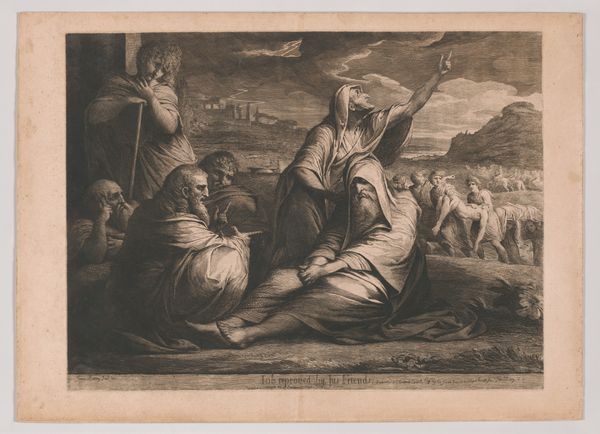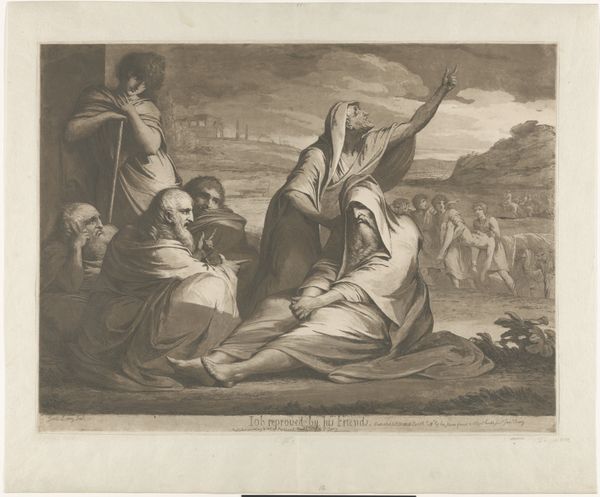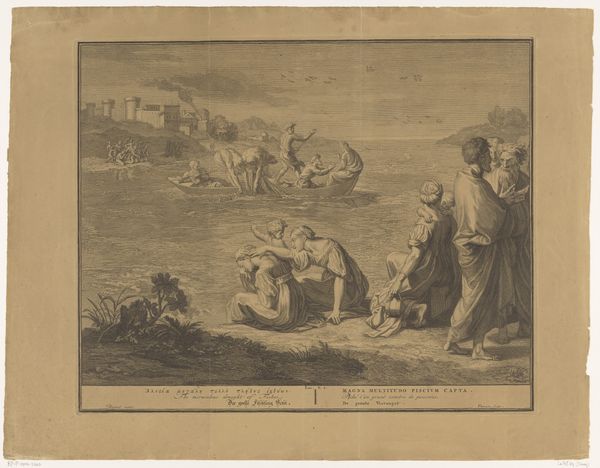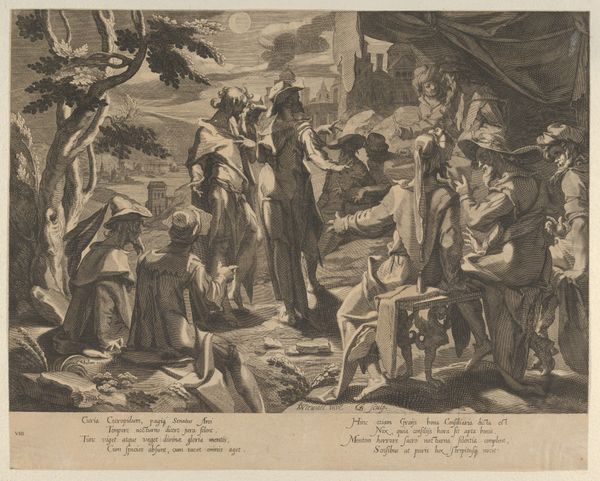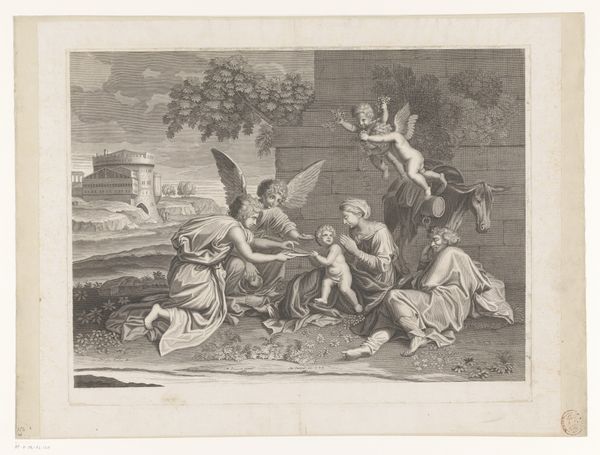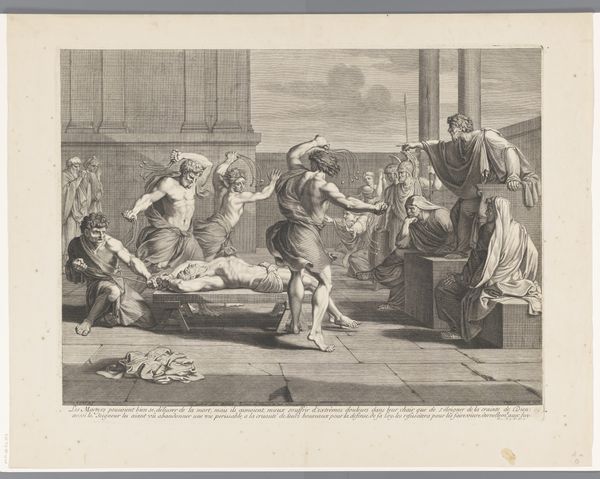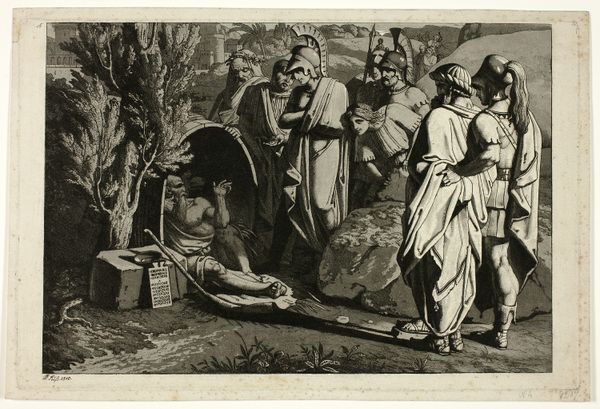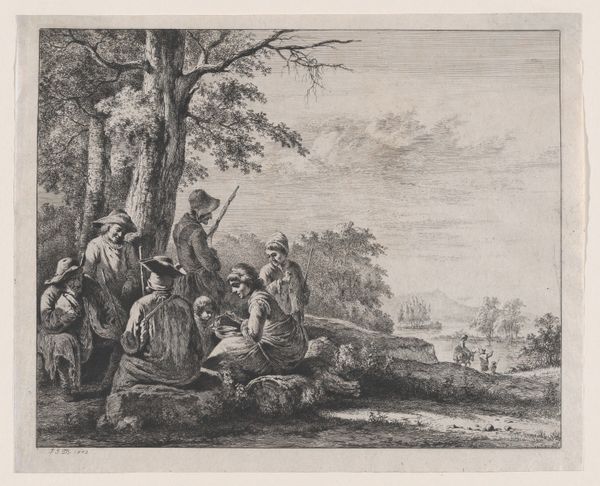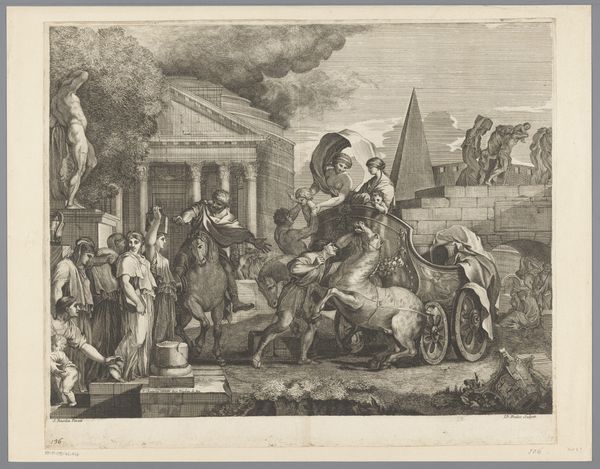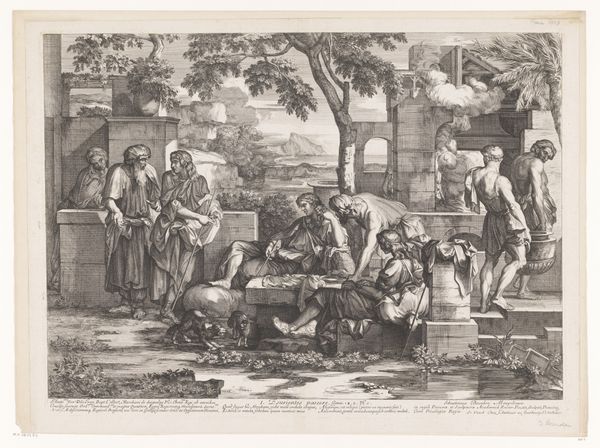
print, wood-engraving
#
pencil drawn
#
aged paper
#
toned paper
#
light pencil work
#
photo restoration
# print
#
pencil sketch
#
charcoal drawing
#
old-timey
#
19th century
#
united-states
#
wood-engraving
#
watercolor
Dimensions: 9 1/8 x 13 3/4 in. (23.2 x 34.9 cm)
Copyright: Public Domain
Editor: This is "Seesaw - Gloucester," a wood engraving by Winslow Homer, dating back to 1874. It's got a really nostalgic, almost dreamlike quality, and it seems to depict a group of children at the beach in a rather segregated manner. What do you see in this piece beyond the surface-level depiction of childhood play? Curator: I see a powerful snapshot of gendered expectations and social structures operating within childhood even in 1874. Notice the composition: boys dominate the seesaw, actively playing and engaging with physical space, while the girls are clustered together, engaged in a seemingly domestic task – perhaps mending nets? How do you think that separation reinforces societal expectations placed on them? Editor: That's interesting! I hadn’t really thought of it like that. It just seemed like two separate groups, maybe one more active than the other. But I see what you mean now; there’s a clear division in terms of activity and perhaps future roles within their community. Curator: Exactly. Consider Homer's wider body of work. He frequently depicted women in domestic roles or facing the hardships of maritime life. It’s difficult to interpret this outside the socio-political and economic landscape of the 19th-century America. The scene normalizes an environment where roles are already mapped out along gendered lines, preparing them, from a very young age, to continue patterns in labor and activity. Do you think his depiction passively shows the world as it is, or it a critical, deliberate portrayal of inequality? Editor: That's a tricky question! Knowing what I know about Homer's attention to detail and observation of social dynamics, I'd lean towards this being a commentary, albeit subtle, on the limited opportunities available to girls during this era. Curator: Perhaps. Ultimately, that ambiguity is where its power lies. We see these dynamics mirrored today; albeit perhaps in less overt forms. This artwork, then, becomes a critical tool for looking at the past, reflecting on the present and mapping a more equitable future. Editor: I never thought I could view such a simple, calm sketch as something more connected with modern social and cultural discussions! Curator: Art is a witness, isn't it? It holds up a mirror to society, past and present. Understanding that makes art history incredibly relevant and, dare I say, a little dangerous.
Comments
No comments
Be the first to comment and join the conversation on the ultimate creative platform.

